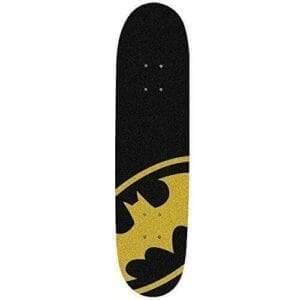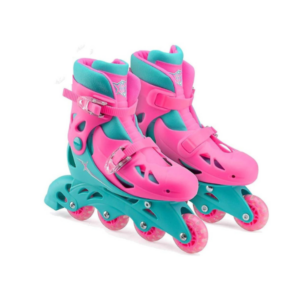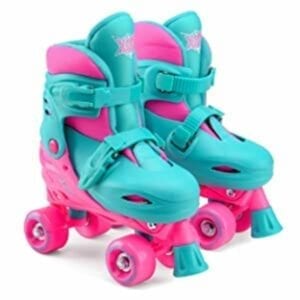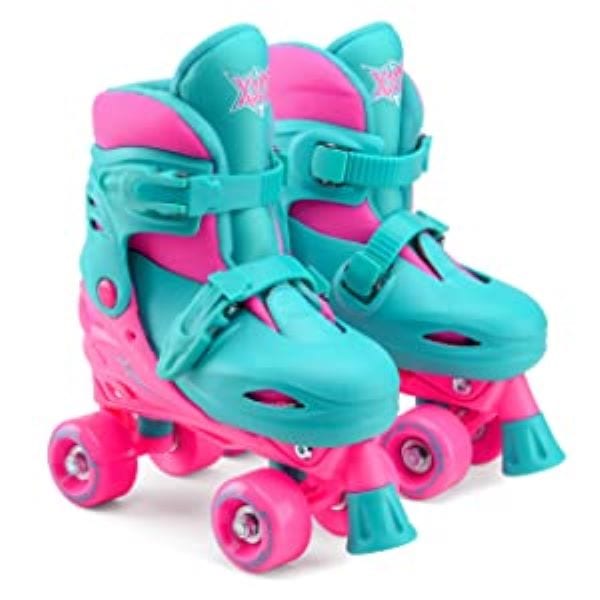Frequently asked questions
At what age can my child realistically start skateboarding or roller skating?
This heavily depends on individual development, balance, and coordination.
- Scooters (3-5 years): Often a great precursor, building balance and confidence before moving to more complex wheeled activities.
- Quad Skates (4-6 years): The wider wheelbase offers more stability, making them a good starting point for younger children learning to balance on wheels.
- Skateboards (6-8 years): Requires more core strength, balance, and fine motor control. Many children are ready for a beginner skateboard around 6 or 7, but some might need to wait until 8 or 9.
- Inline Skates (6-8 years): While faster and more agile, inline skates demand better ankle strength and balance than quads. Starting around 6 or 7 is common for kids with good coordination.
Always prioritize your child’s readiness over age recommendations.
What’s the absolute most essential safety gear?
- Wrist Guards: Crucial for protecting against falls, which are common for beginners.
- Knee Pads: Reduce impact on the knees during falls.
- Elbow Pads: Protect the elbows, especially during forward falls.
- Proper Footwear: Sturdy, flat-soled shoes for skateboarding; comfortable, well-fitting skates for roller sports.
Skateboard, Quad Skates, or Inline Skates – which is best for beginners?
- Quad Skates: Often the easiest for very young beginners due to their stable, wide base (four wheels in a rectangle). They’re great for casual cruising, learning to push, and building confidence in a rink or flat area.
- Skateboards: A different challenge. While some kids take to them quickly, they require learning to balance on a moving deck and push with one foot. A “cruiser” board might be easier than a trick board initially.
- Inline Skates: Offer speed and maneuverability but demand stronger ankle stability. They can be more challenging for initial balance than quads, but many kids quickly master them.
For a true “first wheels” experience, a sturdy scooter can build fundamental balance, followed by quad skates for stability, then progressing to inline skates or skateboards.
How do I choose the right size for kids' roller skates or inline skates?
The general rule of thumb is to choose skates that match your child’s current street shoe size.
- Snug, Not Tight: Skates should fit snugly to provide ankle support without causing discomfort or pinching. There shouldn’t be too much room for the foot to slide around.
- Adjustable Skates: Many kids’ skates are adjustable across 3-4 sizes. These are excellent for growing feet, offering longevity and value. Ensure the adjustment mechanism is secure and easy to use.
How do I choose the right size skateboard for a child?
Skateboard sizing is primarily determined by deck width, which correlates to shoe size and height for stability and control.
Are adjustable size skates a good idea, or are they a compromise on quality?
Adjustable size skates are an excellent idea for growing children! When chosen from a reputable brand, they are not a compromise on quality
Where’s the best place for my child to learn to skate or skateboard?
- Ideal Spots: Empty tennis courts, quiet driveways, smooth paved paths, empty parking lots (during off-hours), or dedicated indoor skate rinks.
- Avoid: Uneven surfaces, gravel, busy streets, or areas with steep inclines.
- Skate Parks: While exciting, skate parks are best reserved until your child has mastered basic pushing, balancing, stopping, and turning on flat ground. Starting too early can be intimidating and potentially unsafe.
What are some common challenges for young beginners, and how can we overcome them?
- Fear of Falling: This is natural! Emphasise the importance of safety gear. Teach them how to fall safely (try to roll, tuck and protect head/hands). Practice falling on grass or carpet.
- Lack of Balance: Start by holding hands, using a wall, or a stable railing. Encourage them to bend their knees – a slightly squatted position lowers their center of gravity and increases stability.
- Looking Down: Beginners often look at their feet. Encourage them to look ahead to where they want to go. This helps with balance and obstacle avoidance.
- Pushing Too Hard/Fast: Start with gentle pushes, focusing on control before speed.
- Frustration: Keep it fun! Short sessions, lots of praise, and celebrating small victories are key.












